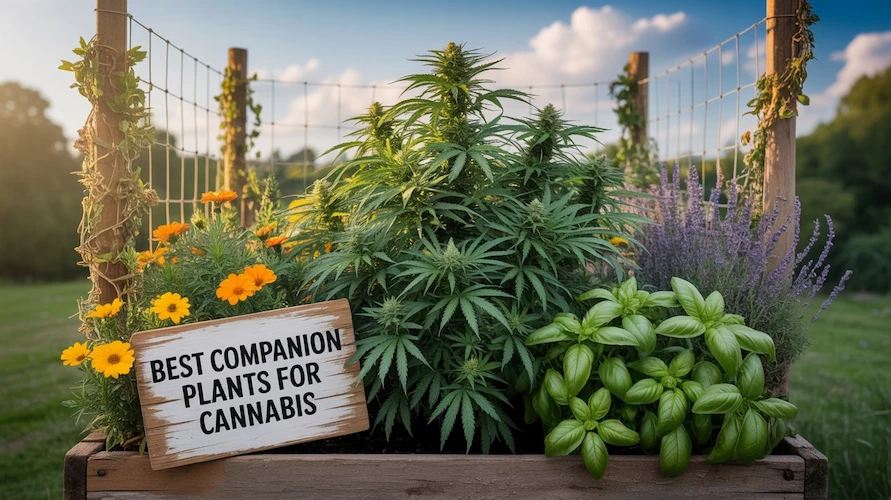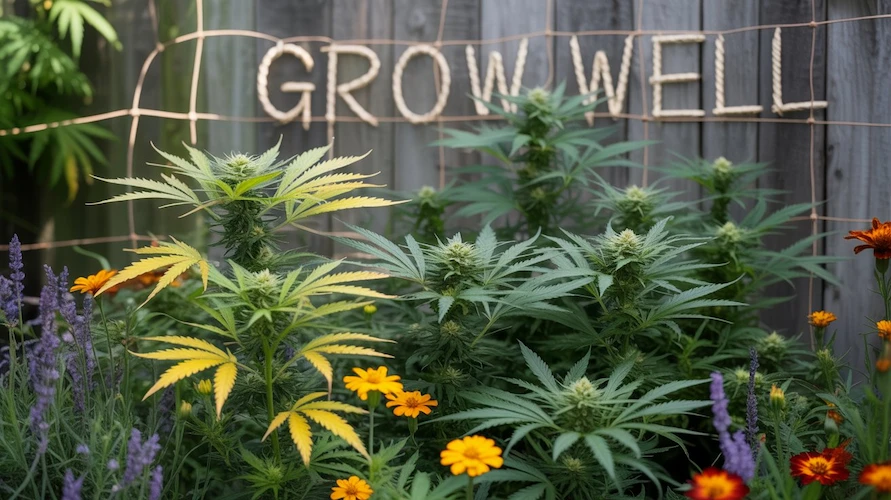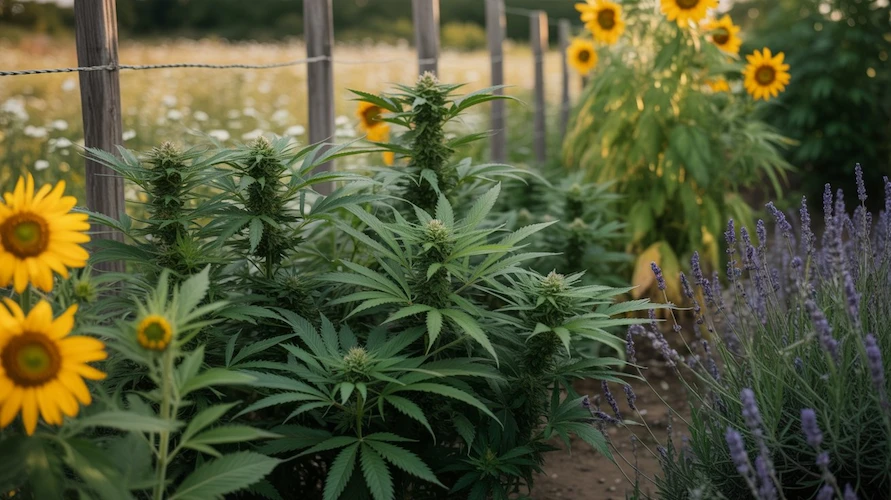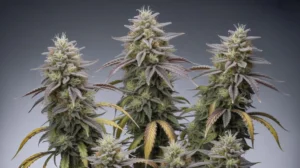Best Companion Plants for Cannabis: A Complete Guide

Growing cannabis is an art, but mastering it is a science. One of the most overlooked yet highly effective techniques to elevate cannabis cultivation is companion planting. By strategically planting certain herbs, flowers, and vegetables alongside cannabis, growers can naturally boost plant health, deter pests, improve soil quality, and even enhance terpene profiles. Whether you’re a backyard cultivator or managing an industrial grow, understanding the best companion plants for cannabis can be a game-changer.
What Is Companion Planting?
Companion planting is the practice of cultivating different plant species in proximity to support mutual growth and health. While it’s often used in vegetable gardening, this age-old technique is gaining popularity among cannabis growers for its eco-friendly, low-maintenance benefits. Instead of relying on synthetic fertilizers and pesticides, companion planting harnesses the natural properties of plants to create a balanced micro-ecosystem.
Why Use Companion Plants for Cannabis?
Companion plants can:
- Repel harmful insects like aphids, whiteflies, and spider mites
- Attract beneficial insects such as ladybugs, parasitic wasps, and bees
- Improve soil health by fixing nitrogen or adding organic matter
- Disguise cannabis odor or appearance for discreet grows
- Enhance flavor and aroma through terpene synergy
Let’s break down the best types of companion plants based on their primary benefit.
Pest-Repelling Companion Plants
Basil (Ocimum basilicum)
Basil is a cannabis grower’s best friend. Its pungent aroma repels thrips, aphids, and whiteflies while simultaneously attracting pollinators. Some growers claim that basil grown near cannabis enhances the plant’s flavor and aroma due to similar terpene production.
Best Use: Interplant basil throughout your grow, especially near the base of cannabis plants.
Marigold (Tagetes spp.)
Marigolds release a compound called thiophene that is toxic to nematodes and other soil-borne pests. They also deter beetles, aphids, and whiteflies.
Best Use: Plant marigolds around the perimeter of your cannabis garden.
Lavender (Lavandula angustifolia)
Lavender not only smells wonderful, but it’s also a powerhouse pest deterrent. Its fragrant oils repel moths, fleas, and ticks, and attract pollinators like bees.
Best Use: Position lavender along the borders to serve as both a pest barrier and pollinator attractor.
Chives (Allium schoenoprasum)
With their mild onion scent, chives repel aphids and Japanese beetles. They also deter powdery mildew, a common issue in cannabis gardens.
Best Use: Plant in clusters near cannabis, particularly in humid climates.
Beneficial Insect Attractors
Yarrow (Achillea millefolium)
Yarrow produces tiny white or yellow flowers that attract ladybugs, parasitic wasps, and hoverflies—all predators of common cannabis pests.
Best Use: Grow yarrow around the garden edges or in patches between cannabis rows.
Dill (Anethum graveolens)
Dill is a magnet for beneficial insects, including lacewings and predatory beetles. Its tall, wispy structure can also offer slight shade and wind protection.
Best Use: Interplant dill throughout your cannabis garden, avoiding heavy shading of shorter plants.
Fennel (Foeniculum vulgare)
Fennel attracts many of the same beneficial insects as dill and yarrow. However, it can be allelopathic, meaning it may inhibit the growth of nearby plants. Use with caution.
Best Use: Plant fennel at a safe distance from cannabis, using it as a border attractor.
Soil Enhancers and Nitrogen Fixers
Clover (Trifolium spp.)
Clover is a natural nitrogen fixer, meaning it converts atmospheric nitrogen into a form accessible to plants. This is essential for hardy cannabis vegetative growth. Clover also acts as a living mulch, suppressing weeds and retaining soil moisture.
Best Use: Sow clover as a ground cover beneath cannabis plants.
Alfalfa (Medicago sativa)
Alfalfa improves soil structure, fixes nitrogen, and adds organic biomass. It’s also rich in minerals, making it an excellent plant to compost or mulch around cannabis.
Best Use: Grow alfalfa in raised beds or use as green manure in off-seasons.
Comfrey (Symphytum officinale)
Comfrey mines deep soil nutrients like potassium and calcium, bringing them to the surface with its long taproots. Its large leaves can be chopped and dropped as mulch or brewed into compost tea.
Best Use: Plant comfrey on the outskirts of your cannabis plot for nutrient cycling.
Odor Maskers and Camouflage
Mint (Mentha spp.)
Mint has a strong scent that can help mask the distinctive odor of flowering cannabis, especially in guerrilla grows. Be aware that mint spreads aggressively.
Best Use: Grow mint in containers near your cannabis to prevent it from becoming invasive.
Rosemary (Rosmarinus officinalis)
Rosemary deters pests and has a pungent scent that can help mask the smell of cannabis. It is drought-tolerant and thrives in similar soil conditions.
Best Use: Incorporate rosemary along walkways or near cannabis in hot, dry climates.
Sunflowers (Helianthus annuus)
Sunflowers act as natural decoys, drawing aphids away from cannabis. Their towering presence also provides shade and privacy.
Best Use: Plant in rows or clusters along garden borders for both function and beauty.
Terpene Boosters
Chamomile (Matricaria chamomilla)
Chamomile is thought to enhance the oil production of nearby plants, including cannabis. It also improves soil health and attracts beneficial insects.
Best Use: Plant chamomile between cannabis plants or in patches nearby.
Lemon Balm (Melissa officinalis)
Closely related to mint, lemon balm shares many of its pest-repelling and aroma-enhancing qualities. It may also contribute to terpene synergy with citrus-heavy cannabis strains.
Best Use: Grow in containers or raised beds to prevent unwanted spread.
Companion Planting Strategies
Polyculture Beds
Design beds with alternating rows or clusters of cannabis and companions. For example, alternate rows of basil, cannabis, and marigold. This diversity reduces monoculture vulnerability.
Layered Planting
Use low-growing companions like clover or chamomile under taller cannabis plants, medium-height plants like lavender or rosemary around the middle, and tall plants like sunflowers on the periphery.
Living Mulch
Ground covers such as clover and alfalfa not only fix nitrogen but also prevent erosion, suppress weeds, and maintain soil temperature.
What To Avoid in Companion Planting
Not all plants are cannabis-friendly. Avoid the following:
- Fennel near cannabis due to its allelopathic properties
- Black walnut trees for their juglone secretion, which inhibits many plant species
- Mint planted directly in beds, as it can take over your entire garden
- Brassicas (broccoli, cabbage), which compete heavily for nutrients
Indoor Companion Planting Tips
While most companion planting is done outdoors, some principles can be adapted for indoor grows:
- Use small pots of basil or chives to deter pests
- Place rosemary or lavender in containers near grow tents for odor masking
- Incorporate microgreens like clover in shallow trays to add humidity and improve the microclimate
Make sure your indoor companion plants do not compete with cannabis for light or space.
Final Thoughts: Let Nature Work for You
Companion planting is a sustainable, cost-effective, and natural way to improve cannabis cultivation. By selecting the right companion plants, growers can reduce chemical use, boost plant resilience, and even subtly enhance the flavor and aroma of their harvest. While no single plant is a silver bullet, a well-thought-out companion planting strategy can yield profound benefits.
So, whether you’re looking to deter pests, enrich your soil, or elevate your terpene game, the best companion plants for cannabis are right under your nose—literally and figuratively.
Ready to grow your garden smarter? Explore cannabis seeds and start planning your companion planting layout today, only at SeedsHereNow.com.
Suggested Articles
;)
;)
;)






 18 Dec 2025
18 Dec 2025  5 min read
5 min read


 May 15, 2025
May 15, 2025 


RESPONSES (0)
No responses yet. Be the first to respond!